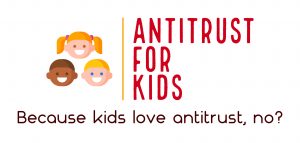Author: Luis Blanquez
Are you delegating your pricing decisions to a common algorithm software platform? If so, you might violate the antitrust laws. It may not even matter whether you actually communicated with your competitors. All it might take is for the antitrust agencies—The Department of Justice or the Federal Trade Commission—to allege illegal collusion is the use by your company of an algorithm-software tool trained using competitively sensitive data, with knowledge that some of your competitors are doing the same thing. Even deviation from the algorithm’s recommended pricing might not save you from antitrust liability.
The FTC’s Blog Post: Price Fixing by Algorithm is Still Price Fixing
On March 1, 2024, the Federal Trade Commission (FTC) published a blog post explaining how relying on a common algorithm to determine your pricing decisions might violate Section 1 of the Sherman Act.
In the blog post, the FTC includes a previous Statement of Interest (“SOI”) filed in the Duffy v. Yardi Systems, Inc. case to explain the legal principles applicable to claims of algorithmic price fixing. First, price fixing through an algorithm is still price fixing. Second: (1) you can’t use an algorithm to evade the law banning price-fixing agreements, and (2) an agreement to use shared pricing recommendations, lists, calculations, or algorithms can still be unlawful even where co-conspirators retain some pricing discretion or cheat on the agreement.
The blog concludes with two important remarks:
- “Agreeing to use an algorithm is an agreement. In algorithmic collusion, a pricing algorithm combines competitor data and spits out the suggested “maximized” rent for a unit given local conditions. Such software can allow landlords to collude on pricing by using an algorithm—something the law doesn’t allow IRL. When you replace once-independent pricing decisions with a shared algorithm, expect trouble. Competitors using a shared human agent to fix prices? Illegal. Doing the same thing but with an agreed upon, shared algorithm? Still illegal. It’s also irrelevant that the algorithm maker isn’t a direct competitor if you and your competitors each agree to use their product knowing the others are doing the same in concert.
- Price deviations don’t immunize conspirators. Some things in life might require perfection, but price-fixing arrangements aren’t one of them. Just because a software recommends rather than determines a price doesn’t mean it’s legal. Setting initial starting prices or recommending initial starting prices can be illegal, even if conspirators deviate from recommended prices. And even if some of the conspirators cheat by starting with lower prices than those the algorithm recommended, that doesn’t necessarily change things. Being bad at breaking the law isn’t a defense.”
This is a bold statement from the FTC. Algorithmic collusion is not only on the agency’s radar now, but it is also one of its priorities.
Final Conclusions
Algorithm collusion is on the crosshairs of the FTC and DOJ, so expect more cases soon. And not only in the real-estate industry, as highlighted from existing investigations on the online retailing and meat processing industries. Indeed, it is becoming common practice for more industries and businesses to implement and rely on algorithms to set their pricing strategies.
 The Antitrust Attorney Blog
The Antitrust Attorney Blog












